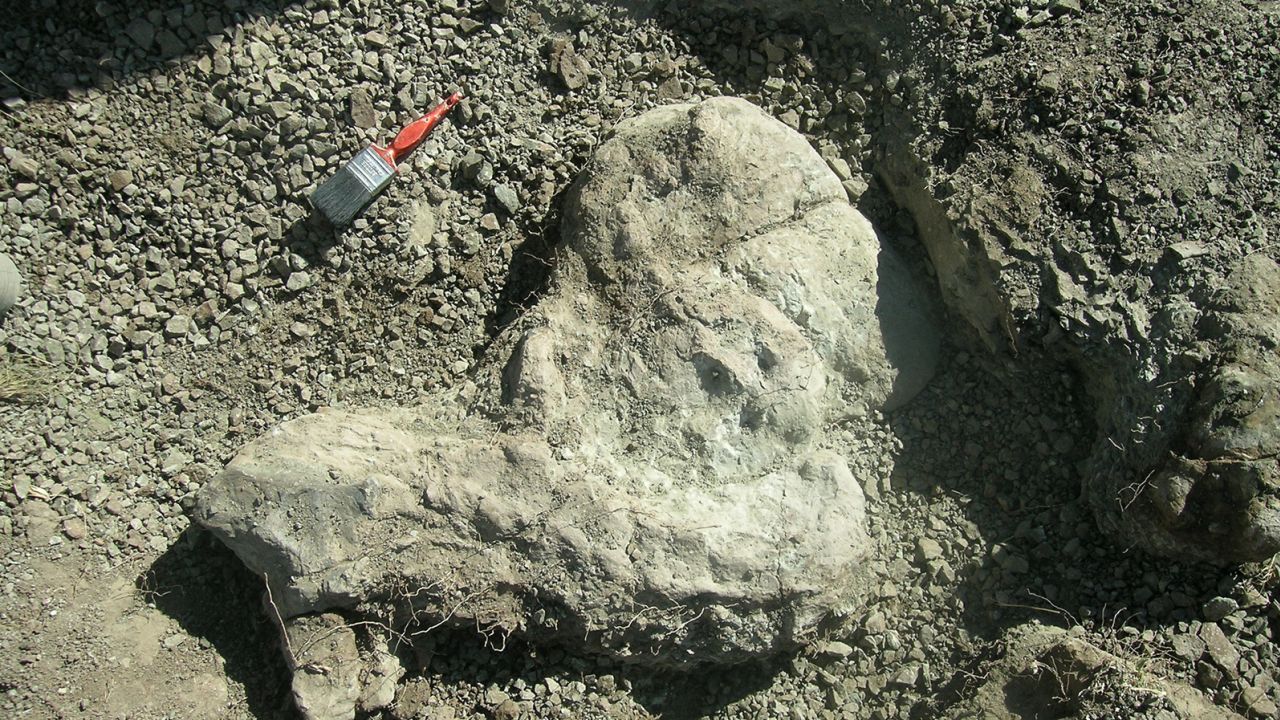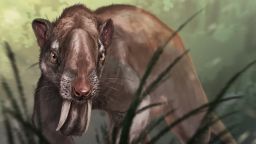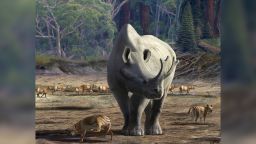Editor’s Note: Sign up for CNN’s Wonder Theory science newsletter. Explore the universe with news on fascinating discoveries, scientific advancements and more.
Fossils of an unusual saber-toothed predator that lived during the worst mass extinction event on Earth are revealing how unstable things were for animals during “the Great Dying.”
A series of supervolcanoes in Eurasia erupted 250 million years ago at the end of the Permian era, expelling greenhouse gases and causing catastrophic climate change. The planet warmed and oxygen decreased in the oceans and atmosphere — and about 90% of life on Earth disappeared, setting the stage for dinosaurs to appear and rule the planet until their own extinction 66 million years ago.
But the Permian mass extinction event didn’t occur overnight. Instead, it unfurled over 1 million years, leading researchers to call the event “the Great Dying.”
The fossil record acts like a time capsule, and the bones reveal the diverse animals that fought for survival as their environments changed around them. One of those creatures was the saber-toothed Inostrancevia, a tiger-size mammalian ancestor that, with the skin of a rhino or elephant, looked a bit like a reptile.

Scientists first discovered the fossils of two specimens in 2010 and 2011 at the Karoo Basin in South Africa. After years of preparing the fossils — cleaning, piecing them together like a puzzle and stabilizing them with picks and drills — researchers were finally able to study the creature in detail.
Inostrancevia’s unpected migration
The large fossils, including skulls, ribs, vertebrae and leg bones, surprised the team because they appeared to belong to Inostrancevia, one of the first saber-toothed predators on the planet, the fossils of which had only ever been found in Russia. The researcher’s findings published Monday in the journal Current Biology.
“All the big top predators in the late Permian in South Africa went extinct well before the end-Permian mass extinction. We learned that this vacancy in the niche was occupied, for a brief period, by Inostrancevia,” said study coauthor Pia Viglietti, a research scientist at the Field Museum in Chicago, in a statement. “The fossils themselves were quite unexpected.”
For the past 100 years, scientists thought Inostrancevia lived only in the Northern Hemisphere, and a different group of mammalian ancestor predators lived in the Southern Hemisphere. Living during a time of immense upheaval, Inostrancevia managed to migrate 7,000 miles across the supercontinent Pangaea and become a predator in a different environment before eventually going extinct.
“When things started to get bad, in the early stages of what would become the worst mass extinction in Earth history, the southern group died out. And the northern species, Inostrancevia, seemingly moved in to fill that gap,” said corresponding study author Christian Kammerer, research curator of paleontology at the North Carolina Museum of Natural Sciences and research associate at the Field Museum. “As they say, nature abhors a vacuum — if there is an open spot in an ecosystem and the resources to support it, life will find a way. Unfortunately for Inostrancevia, things rapidly became so bad that it too (and most other organisms) died out.”
The Permian mass extinction: a complex ecological shift
Studying the Karoo Basin is helping scientists piece together what happened during the Permian mass extinction.

“The Karoo Basin preserves what is by far the best record of life on land before and after the mass extinction,” Kammerer said. “Nowhere else are there so many fossils from the relevant time period (tens of thousands of skulls and skeletons have been collected) or such extensive continuous exposures of rocks across the extinction boundary.”
While the basin only represents what was happening in part of the world at the time, fossils reveal how Inostrancevia’s situation foreshadowed what was to come as fundamental roles within ecosystems shifted due to disappearing species. It was more complicated than when an asteroid strike wiped out the dinosaurs, leading to the rise of mammals.
The fossil record shows that around 251.9 million years ago, the boundary line between the Permian era and the Triassic era, four different animal groups each took their turns serving as top predators, going extinct and then being replaced, Kammerer said. That’s a high-turnover rate within a couple million years compared with the way animal groups function today.
“Currently, for example, the top predators in most terrestrial environments are carnivoran mammals (think cats, dogs, bears), and that has been the case for around the last 25 million years,” he said. “What we see around the Permian extinction is occupation of top predator roles — the niche at the top of the food chain — shifting very rapidly, over the course of 2 million years or less. This speaks to a fundamentally destabilized biosphere.”
Top predators are some of the most vulnerable when it comes to extinction risk because they are slower to reproduce and grow and require large areas for roaming and hunting, like wolves in Europe and tigers in Asia, Kammerer said.
Gaps in Inostrancevia’s history
The fossils from Russia and South Africa tell part of Inostrancevia’s story, but researchers want to know what happened during that vast migration between the two areas. Other promising fossil sites in northern Africa could fill in those knowledge gaps and reveal more information about how the animals lived.
“Protomammals are an odd group of organisms, not quite reptilian, but not yet mammalian, and it can be difficult to imagine how they actually functioned, which is why good fossils and detailed study of them is so crucial,” Kammerer said.
Studying what took place during Earth’s greatest loss of biodiversity millions of years ago can act as a mirror for what is happening globally now due to the climate crisis, the researchers said.
“It’s always good to get a better understanding of how mass extinction events affect ecosystems, especially because the Permian is basically a parallel on what we’re going through now,” Viglietti said.
“We don’t really have any modern analogs of what to expect with the mass extinction happening today, and the Permo-Triassic mass extinction event represents one of the best examples of what we could experience with our climate crisis and extinction,” she said.
Article From & Read More ( Saber-toothed mammalian ancestor reveals how unstable life was during ‘the Great Dying’ - CNN )https://ift.tt/kNMf9uT
Science


No comments:
Post a Comment